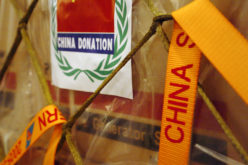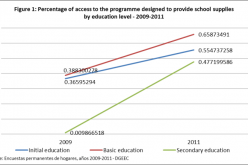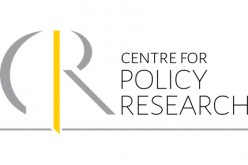April 2015: Five Headlines from a Big Month for the Data Revolution
This blog post is written by Sarah T. Lucas, Program Officer, Global Development and Population, at the Hewlett Foundation
If the history of the data revolution were written today, it would include three major dates. May 2013, when the High Level Panel on the Post-2015 Development Agenda first coined the phrase “data revolution.” November 2014, when the UN Secretary-General’s Independent Expert Advisory Group (IEAG) set a vision for it. And April 2015, when five headliner stories pushed the data revolution from great idea to a concrete roadmap for action.
The April 2015 Data Revolution Headlines
1. The African Data Consensus puts Africa in the lead on bringing the data revolution to the regional level. The Africa Data Consensus (ADC) envisions “a profound shift in the way that data is harnessed to impact on development decision-making, with a particular emphasis on building a culture of usage.” The ADC finds consensus across 15 “data communities”—ranging from open data to official statistics to geospatial data, and is endorsed by Africa’s ministers of finance. The ADC gets top billing in my book, as the first contribution that truly reflects a large diversity of voices and creates a political hook for action. (Stay tuned for a blog from my colleague Rachel Quint on the ADC).
2. The Sustainable Development Solutions Network (SDSN) gets our minds (and wallets) around the data needed to measure the SDGs. The SDSN Needs Assessment for SDG Monitoring and Statistical Capacity Development maps the investments needed to improve official statistics. My favorite parts are the clear typology of data (see pg. 12), and that the authors are very open about the methods, assumptions, and leaps of faith they had to take in the costing exercise. They also start an important discussion about how advances in information and communications technology, satellite imagery, and other new technologies have the potential to expand coverage, increase analytic capacity, and reduce the cost of data systems.
3. The Overseas Development Institute (ODI) calls on us to find the “missing millions.” ODI’s The Data Revolution: Finding the Missing Millions presents the stark reality of data gaps and what they mean for understanding and addressing development challenges. The authors highlight that even that most fundamental of measures—of poverty levels—could be understated by as much as a quarter. And that’s just the beginning. The report also pushes us to think beyond the costs of data, and focus on how much good data can save. With examples of data lowering the cost of doing government business, the authors remind us to think about data as an investment with real economic and social returns.
4. Paris21 offers a roadmap for putting national statistic offices (NSOs) at the heart of the data revolution. Paris21’s Roadmap for a Country-Led Data Revolution does not mince words. It calls on the data revolution to “turn a vicious cycle of [NSO] underperformance and inadequate resources into a virtuous one where increased demand leads to improved performance and an increase in resources and capacity.” It makes the case for why NSOs are central and need more support, while also pushing them to modernize, innovate, and open up. The roadmap gets my vote for best design. This ain’t your grandfather’s statistics report!
5. The Cartagena Data Festival features real-live data heroes and fosters new partnerships. The Festival featured data innovators (such as terra-i using satellite data to track deforestation), NSOs on the leading edge of modernization and reform (such as Colombia and the Philippines), traditional actors using old data in new ways (such as the Inter-American Development Bank’s fantastic energy database), groups focused on citizen-generated data (such as The Data Shift and UN My World), private firms working with big data for social good (such as Telefónica), and many others—all reminding us that the data revolution is well underway and will not be stopped. Most importantly, it brought these actors together in one place. You could see the sparks flying as folks learned from each other and hatched plans together. The Festival gets my vote for best conference of a lifetime, with the perfect blend of substantive sessions, intense debate, learning, inspiration, new connections, and a lot of fun. (Stay tuned for a post from my colleague Kristen Stelljes and me for more on Cartagena).
This month full of headlines leaves no room for doubt—momentum is building fast on the data revolution. And just in time.
With the Financing for Development (FFD) conference in Addis Ababa in July, the agreement of Sustainable Development Goals in New York in September, and the Climate Summit in Paris in December, this is a big political year for global development. Data revolutionaries must seize this moment to push past vision, past roadmaps, to actual action and results.
In addition to all the important data work at the country and regional level, we have a major opportunity at the global level as well. This is the moment to identify champions and secure commitments from the highest levels of governments, businesses, international institutions, and civil society organizations. We must boldly ask of them:
- What new data will you share?
- How will you use traditional and new data sources to help solve development problems?
- What new partners will you work with to do this?
We must ask, “Are you willing to be a champion — on the global stage — for using data to better understand and address development challenges?” If so, there will be a place for you at the podium in Addis, New York, or Paris. And there will be a page for you in the history of the data revolution.
1,207 total views, 2 views today








